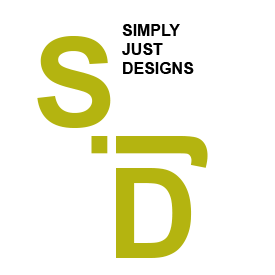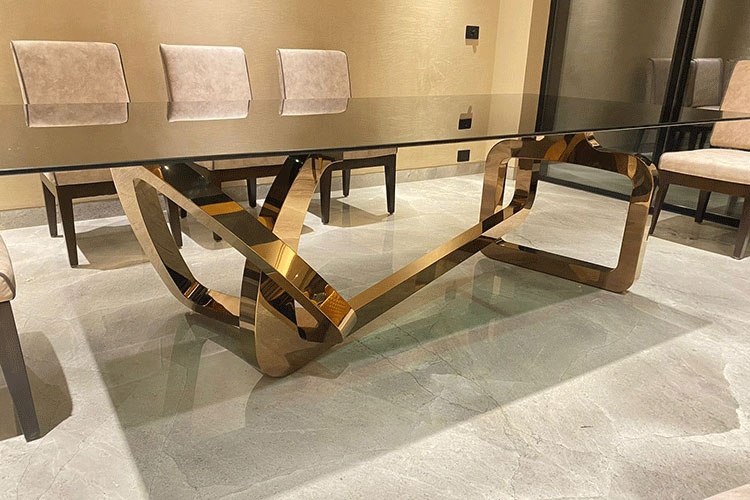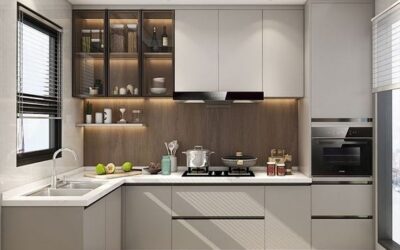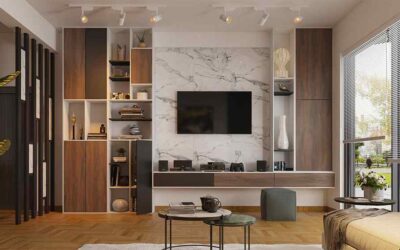PVD coating stands for Physical Vapor Deposition coating, which is a thin film deposition process used to enhance the surface properties of various objects, typically for decorative or functional purposes. This involves the deposition of a thin film of material onto a substrate using a physical vapor deposition process. PVD coatings can be applied to a wide range of materials, including metals, ceramics, plastics, and glass. In interior design it is used for both functional and decorative purposes. The unique properties of PVD coatings, such as enhanced durability, wear resistance, and the ability to achieve a variety of colours, make them suitable for a range of interior applications.
What is PVD coating
Physical Vapor Deposition (PVD) is a sophisticated and versatile thin film deposition technique that has revolutionized surface engineering across various industries. In this exploration, we’ll delve into the intricacies of PVD, unraveling the science behind this transformative process. At its core, Physical Vapor Deposition (PVD) is a method of coating surfaces with thin films through the physical process of vaporization and condensation. Unlike traditional methods like electroplating, PVD does not involve a liquid phase during the coating process.
Key Components of PVD:
Source Material:
- PVD begins with a source material, often in the form of a solid metal or alloy, known as the target.
- Common target materials include metals such as titanium, chromium, aluminum, and alloys like brass.
Vacuum Chamber:
- The entire PVD process takes place in a vacuum chamber, ensuring the absence of air and other contaminants that could interfere with the deposition.
Target Vaporization:
- The source material (target) is subjected to high-energy methods to induce vaporization. Common techniques include:
- Sputter Deposition: Bombarding the target with ions to release vaporized atoms.
- Evaporation Deposition: Heating the target to generate a vapor.
Vapor Phase:
- Once vaporized, the material transforms into a gaseous phase within the vacuum chamber.
Substrate Deposition:
- A substrate, often the object being coated, is strategically positioned to receive the vaporized material.
- The vapor condenses onto the substrate, forming a thin film.
Film Formation:
- The condensed vapor forms a thin film on the substrate’s surface. The film adheres to the substrate, providing the desired coating.
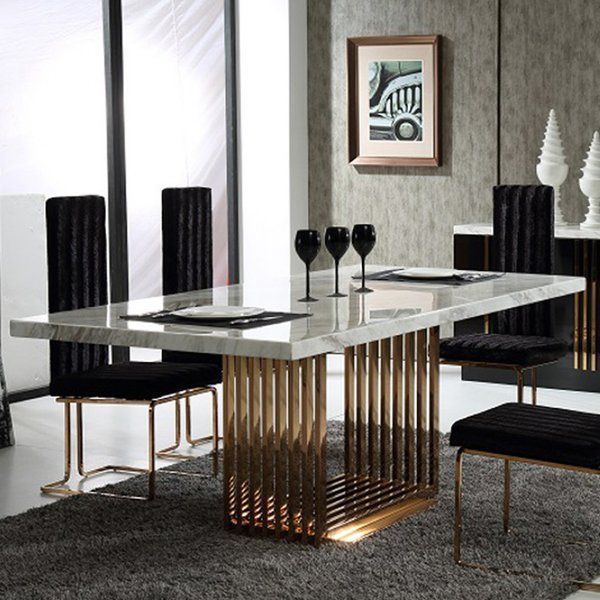
Source: Fino Roccia
Benefits of PVD Coating
Physical Vapor Deposition (PVD) coating has emerged as a game-changer in surface engineering, offering a multitude of benefits that enhance the durability, performance, and aesthetic appeal of various materials. Let’s explore the key advantages that make PVD coating a sought-after technology across industries.
1. Enhanced Hardness and Wear Resistance:
- PVD coatings significantly improve the hardness of surfaces, making them highly resistant to wear, abrasion, and scratches.
- Components subjected to friction and mechanical stress, such as cutting tools and automotive parts, benefit from prolonged lifespan and reduced maintenance.
2. Improved Corrosion Resistance:
- PVD coatings act as protective layers, providing an effective barrier against corrosion and oxidation.
- Components exposed to harsh environments, including aerospace and marine applications, experience prolonged resistance to rust and degradation.
3. Aesthetic Appeal and Versatility:
- PVD offers a vast array of colors and finishes, allowing for customization and aesthetic versatility.
- Decorative coatings in consumer electronics, architectural elements, and automotive parts benefit from both functional and visually appealing finishes.
4. Eco-Friendly and Sustainable:
- PVD is a more environmentally friendly coating method compared to certain traditional techniques.
- The process involves minimal waste, and the absence of liquid chemicals contributes to a reduced environmental footprint.
5. Consistency and Uniformity:
- PVD coatings exhibit uniform thickness and coverage across surfaces, ensuring consistent performance.
- This uniformity enhances the overall quality and reliability of coated products.
6. Increased Lifespan of Products:
- By providing resistance to wear, corrosion, and other forms of degradation, PVD coatings contribute to the extended lifespan of products.
- This longevity reduces the frequency of replacements and enhances the overall cost-effectiveness of coated materials.
7. Broad Range of Applications:
- PVD coatings find applications in diverse industries, including aerospace, automotive, medical, consumer electronics, and architecture.
- The versatility of PVD technology allows for the enhancement of various materials and components.
8. Biocompatibility in Medical Applications:
- PVD coatings on medical implants enhance biocompatibility, ensuring compatibility with the human body.
- The corrosion resistance and inert nature of certain PVD-coated materials contribute to the safety and longevity of medical devices.
9. Resistance to Fading and Tarnishing:
- PVD coatings exhibit resistance to fading, ensuring that colors remain vibrant over time.
- The resistance to tarnishing is particularly crucial in applications where aesthetics play a significant role, such as jewelry and architectural finishes.
10. Improved Thermal and Electrical Conductivity:
- Some PVD coatings, such as diamond-like carbon (DLC), can improve thermal and electrical conductivity.
- This makes PVD-coated components suitable for applications where efficient heat dissipation or electrical conductivity is essential.
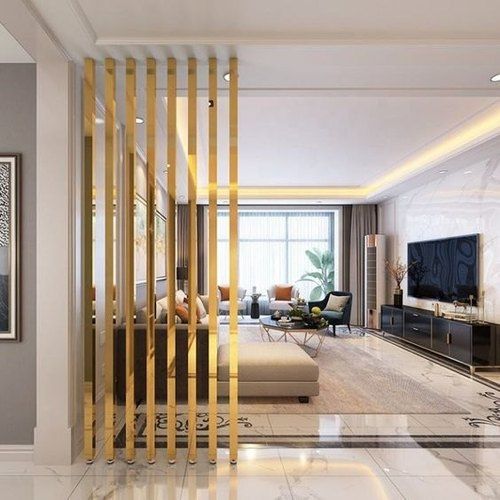
Source: indiamart.com
Popular PVD Coating Finishes and Colors
Get Free Design
PVD coating technology has become a driving force in interior design, offering a dazzling array of finishes and colors that elevate the aesthetics of spaces. Whether adorning furniture, architectural elements, or decorative fixtures, PVD coatings bring a touch of sophistication and durability. Let’s explore some of the popular PVD coating finishes and colors that are making waves in contemporary interior design.
1.Polished Chrome:
- Finish Characteristics: A timeless and classic high-gloss finish with a mirror-like appearance.
- Application: Ideal for modern and minimalist interiors, often used in furniture, faucets, and lighting fixtures.
2. Brushed Nickel:
- Finish Characteristics: A matte finish with fine, textured lines, providing a subdued and sophisticated appearance.
- Application: Commonly used in faucets, cabinet hardware, and appliances for a refined and contemporary look.
3. Rose Gold:
- Finish Characteristics: A warm and luxurious finish with a subtle pink hue, adding a touch of glamour.
- Application: Popular in contemporary and eclectic designs, often seen in decorative accents, lighting, and furniture.
4.Gold TiN (Titanium Nitride):
- Finish Characteristics: Mimics the appearance of gold, offering opulence and richness.
- Application: Frequently used in decorative elements, kitchen and bathroom fixtures, and high-end furniture.
5. Antique Brass:
- Finish Characteristics: A warm, aged appearance with dark undertones, providing a vintage and rustic charm.
- Application: Adds character to furniture, lighting fixtures, and decorative hardware in traditional and eclectic interiors.
6.Champagne Gold:
- Finish Characteristics: A subdued and elegant gold finish with champagne undertones, exuding sophistication.
- Application: Ideal for creating a luxurious and refined atmosphere, commonly used in furniture and lighting.
7.Copper:
- Finish Characteristics: A warm and reflective finish with reddish-brown tones, adding a touch of vintage elegance.
- Application: Suited for eclectic and industrial designs, often seen in lighting fixtures, accessories, and furniture.
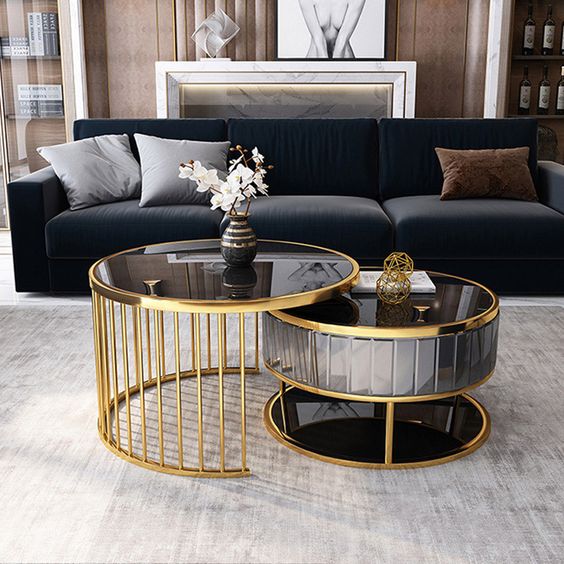
Source: m.homary.com
Maintenance and Care of PVD-Coated Products
1. General Cleaning Guidelines:
- Mild Cleaning Agents: Use a mild, non-abrasive cleaning solution. Avoid harsh chemicals or abrasive cleaners that can damage the PVD coating.
- Soft Cloth or Sponge: Wipe surfaces with a soft, lint-free cloth or a sponge to prevent scratches. Microfiber cloths are ideal for gently removing dust and fingerprints.
2. Avoiding Abrasive Cleaners:
- No Abrasive Pads or Brushes: Steer clear of abrasive cleaning pads or brushes, as they can scratch the PVD coating. Opt for soft materials to maintain the integrity of the surface.
3. Handling and Maintenance Tips for Specific Applications:
- Architectural Elements: Regularly dust surfaces using a soft cloth. For stubborn stains, use a damp cloth with a mild soap solution.
- Furniture: Clean PVD-coated furniture with a soft, damp cloth. For spills, blot immediately to prevent staining. Avoid excessive force while cleaning.
4. Protective Measures:
- Avoid Sharp Objects: Prevent scratches by avoiding contact with sharp or abrasive objects. Be cautious when placing items on PVD-coated surfaces to prevent potential damage.
5. Temperature Considerations:
- Avoid Extreme Temperatures: PVD coatings are generally resilient, but extreme temperatures can affect their longevity. Avoid placing hot items directly on surfaces, and be cautious of sudden temperature changes.
6. Regular Inspections:
- Check for Damage: Periodically inspect PVD-coated surfaces for any signs of damage or wear. Promptly address any issues to prevent further deterioration.
9. Mild Soap and Water Solution:
- Cleaning Technique: For routine cleaning, a solution of mild soap and water can effectively remove dirt and smudges. Avoid using excessive water, and promptly dry the surface.
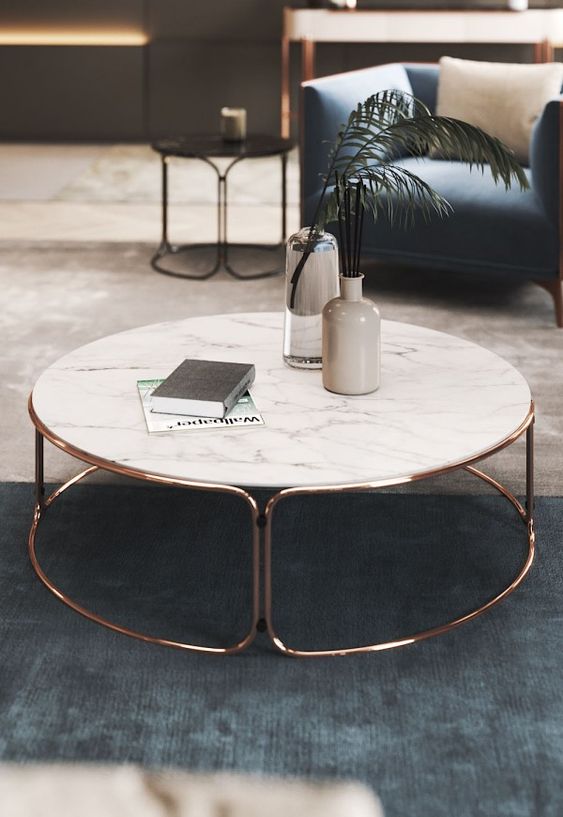
Source: praddy.pt
Incorporation of pvd coating in furniture
1. Metal Furniture:
- Chairs, Tables, and Desks: PVD coatings on metal furniture can provide a range of finishes, from polished chrome for a modern look to antique brass for a vintage touch.
2. Cabinet Hardware:
- Handles and Knobs: PVD-coated cabinet hardware, such as handles and knobs, adds a durable and stylish touch to kitchen and bathroom cabinets.
3. Lighting Fixtures:
- Lamps and Pendant Lights: PVD coatings on lighting fixtures offer a choice of finishes, contributing to the overall ambiance of a room. For example, gold or rose gold coatings can add warmth and sophistication.
4. Outdoor Furniture:
- Patio Sets and Garden Furniture: PVD coatings can enhance the durability of outdoor furniture, protecting it from weather elements while providing a sleek finish.
5. Tabletops:
- Dining Tables and Coffee Tables: PVD-coated tabletops can add a touch of elegance, with finishes like brushed nickel or gunmetal gray offering a sophisticated look.
6. Bed Frames:
- Headboards and Bed Frames: PVD coatings on bed frames can provide durability and a variety of finishes, complementing the overall bedroom design.
7. Decorative Accents:
- Mirrors, Picture Frames, and Vases: PVD coatings can be applied to decorative accents, offering a range of finishes to match the interior decor and style.
8. Shelving Units:
- Bookshelves and Display Units: PVD coatings on shelving units can contribute to a cohesive design, with finishes such as satin nickel or bronze.
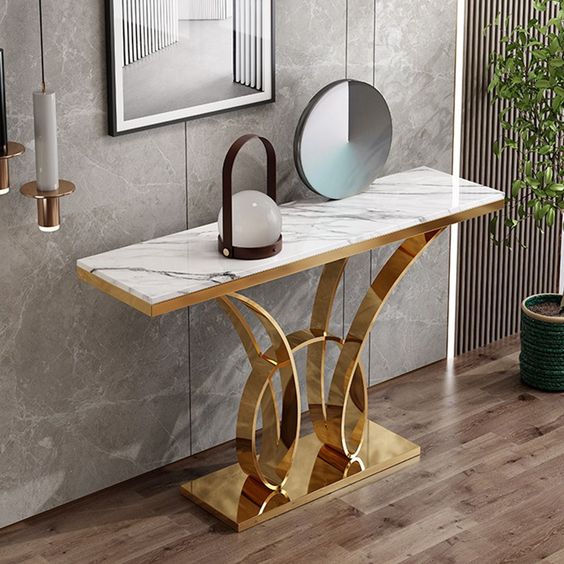
Source: youtube.com
Conclusion
PVD coatings offer various benefits, depending on the specific material used for coating. These coatings can provide enhanced hardness, wear resistance, corrosion resistance, and decorative finishes to the coated objects. Applications of PVD coating are diverse. PVD coatings are valued for their durability, aesthetic appeal, and ability to improve the performance characteristics of materials.

About Author ankitha kelkar
You May Also Like…
The Ultimate Guide to Small Modular Kitchen Designs in 2024
A brief overview of Small Modular Kitchen DesignThe space...
Top 10 TV Unit Designs to Enhance Your Home Interiors
Television unit designs have changed in response to changing...
